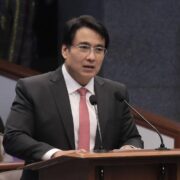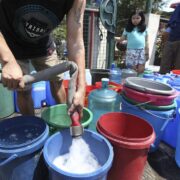Renewables: A matter of survival
At the ongoing 28th Conference of the Parties to the United Nations (UN) Framework Convention on Climate Change (COP28) in Dubai, Environment Secretary Maria Antonia Yulo-Loyzaga stated that the Philippines will boost its call to developed countries to fulfill their commitments to developing countries. The Philippine delegation, she said, is “working in seven major negotiating work streams: loss and damage, climate finance, adaptation, the global stocktake, the just transition [toward] a renewable energy future, … mitigation, and Article 6 [of the Paris Agreement] for greenhouse gas [GHG] emissions reduction and avoidance.” The 2015 Paris Agreement is a landmark international accord that calls for limiting the increase in the global average temperature to no more than 1.5 degrees Celsius and the reduction of GHG emissions by 45 percent by 2030, to reach net zero by 2050.
There is nothing wrong in a shotgun approach of targeting many goals at the same time, particularly in the marketing field. But in more efficient organizations, goals are specified and prioritized into what is the most achievable with the highest degree of positive impact, and putting a timeline on the activities needed to achieve it as soon as possible. For the Philippines, the most critical, as far as many environment groups are concerned, is a major push to shift to renewable energy and move away from fossil fuels.
1.5 degrees future is possible
Days before COP28 opened last week, the Center for Energy, Ecology, and Development (CEED) had urged the Philippine mission led by Yulo-Loyzaga to prioritize this agenda. As CEED deputy executive director Avril de Torres pointed out, “putting an end to the Philippines’ push for massive additional fossil fuel use … is an urgent policy shift that can get us on track” to the Paris Agreement target.
Climate Analytics, a global climate science and policy institute backed by various international organizations such as the UN Environment Programme, the European Commission, and the World Bank, released only last month a country-specific report titled “A 1.5 [degrees] future is possible: getting fossil fuels out of the Philippine power sector.” It described the study as the most detailed scenario modeling for the Philippine power sector to date. Its key finding is that “[t]he Philippines must urgently phase out coal-fired power by 2035, and almost entirely phase out gas-fired power generation by 2040.” Although this may sound too ambitious to local officials and industry players, the report concluded that it is not only feasible, but will also benefit the economy and provide more than a million jobs by 2050.
Fossil fuel phaseoutThe Germany-based Climate Analytics describes in detail what the Philippine government needs to do to get the country’s power sector onto an emissions pathway compatible with the Paris deal. It offers concrete policy suggestions for the Philippines to accelerate the fossil fuel phase-out. Warning that while the Philippines is on the global warming frontline given its archipelagic structure that increases its susceptibility to rising sea levels and changing weather patterns, fossil fuels still dominate the country’s energy system, accounting for 78 percent of power generation in 2022.
Data from the Department of Energy (DOE) show how little the country has tapped the most abundant renewable sources of energy. While the use of coal in power generation has risen sharply to 60 percent in 2022 from 34 percent in 2010, the combined use of hydroelectric and geothermal sources fell to 18 percent in 2022 from 26 percent in 2010 while wind and solar accounted for only 2.5 percent of the power mix.
This proves that despite official rhetoric, the power sector is not aligned with the Philippine emission reduction targets.
A matter of survivalAs the Climate Analytics report pointed out, the Philippine Energy Plan 2023-2050 will not meet the Paris Agreement goals as “its renewable energy targets are too low and there are no plans to phase out fossil fuels.’’
The government should heed mounting calls to craft a well-defined plan for an expedited coal phase-out and expanding renewable energy to 99-percent coverage by 2050 to be in accord with the Paris Agreement. This should not be a difficult goal since the Philippines, as pointed out by the Climate Analytics report, has enough cost-effective renewable resources to both replace fossil fuels in the power sector and meet future energy demands. Abundant renewables include solar rooftop, open-field solar, and onshore/offshore wind energy.
The existing DOE measure against new coal-fired power projects is not enough. The government needs a firmer policy framework on transitioning existing coal- and gas-fed generators to renewable energy.
At the COP28, Special Assistant to the President Antonio Lagdameo Jr. said that President Marcos recognized that building climate resilience and pushing for low-carbon development in renewable energy is a “matter of survival’’ for the Philippines. With that recognition, there is no time to lose in making that inevitable shift to renewable power.
















